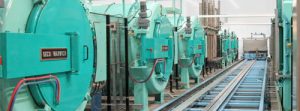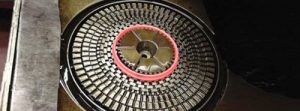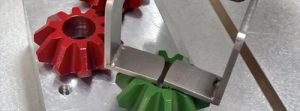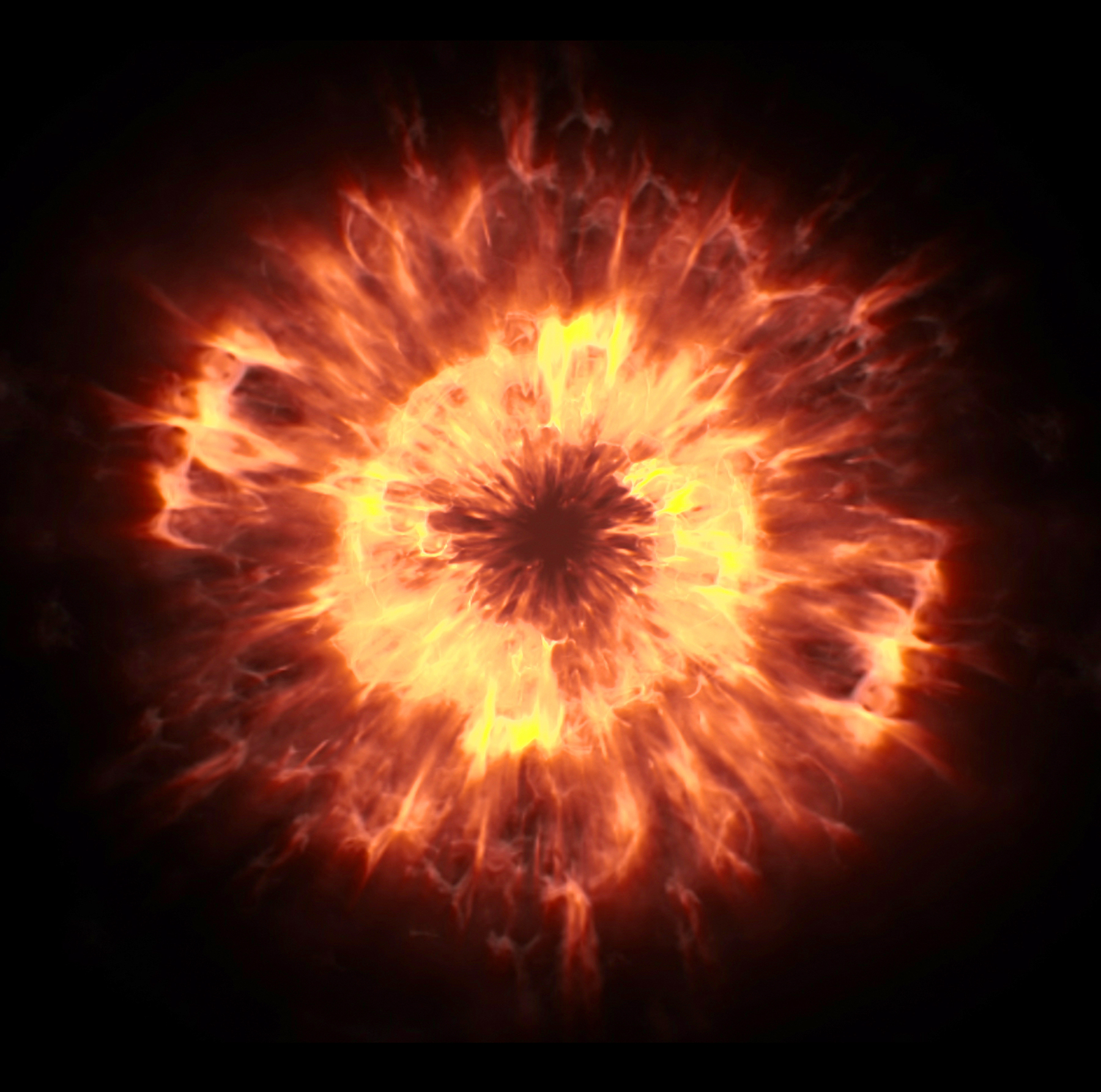
In this column, I will discuss the process of sintering metal powders, an important part of manufacturing powder metallurgy (PM) parts.
Introduction
Powder metallurgy is a net-shape metal-forming process where metal powders are compacted into a near net shape using pressure, and then the metal powder is fused or sintered, yielding a nearly 100 percent dense part.
There are many different types of powder metallurgy, including conventional powder metallurgy, where powders are blended, compacted into shape, and then sintered. There may be secondary operations after sintering. This is schematically shown in Figure 1. In metal injection molding (MIM), the metal powder is mixed with a binder, and injected into a mold, where the part is heated to burn off the binder, and sinter the parts.
Finally, there is metal additive manufacturing (3D printing), where parts are built up layer by layer using direct metal laser sintering (DMLS) from the metal powder.

The advantages of powder metallurgy are many, and include:
- Complex shapes. The PM process can produce shapes that are difficult or impossible to produce using other methods. This is especially true of additive manufacturing.
- Near-net shape. PM can produce parts that are near net shape, reducing the need for extensive machining.
- High dimensional tolerances. Due to the unique tooling used for producing green (un-sintered) compacts, the PM parts have very tight dimensional tolerances.
- Material customization. By combining different metal powders and additives, specialized alloys can be produced.
- Reduced material waste. Since metal powders are used, and the PM part has a near net shape, there is very little waste, compared to casting, machining, or other processes.

Sintering
Sintering is an important part of powder metallurgy because it forms the metallurgical bonds that hold the part together and make the part strong and ready for use. This step, carried out after compaction, uses elevated temperature below the melting temperature of the powders to metallurgically bind the compacted powders together.
In the sintering process, parts are heated to a temperature below their melting point that depends on the powder chemistry. Theoretically, the optimum sintering temperature is between 60-70 percent of the melting temperature [1]. Typical sintering temperatures for common materials are listed in Table 1. The use of elevated temperatures bonds the powder together in a solid structure via mass transport, leading to improved strength and lower system energy.

The sintering process can be divided up into three different stages, based on the geometry of grains that occur during the densification process (Figure 2). When the powders are initially packed in the die before green compaction, the particles have a random distribution of point contact. The initial stage of sintering involves the growth of a sinter bond by diffusion from the single point contact (necking). The first stage ends when grain growth first occurs and is the beginning of the intermediate stage [2]. In the intermediate stage, the necking increases, and the pore volume starts to decrease. It is this stage where the predominant amount of densification occurs. An increase in grain size and pore rounding occurs during this stage. The final stage of sintering is characterized by changes in the geometry of the pores by closing pores, pore isolation, and pore migration. A schematic of the relative density as a function of the different stages is shown in Figure 3.
The sintering process initiates through surface energy minimizations, and drives the mass transport through different avenues:
- Viscous flow, which dominates in the early stages as the particle point contacts form necks through deformation.
- Surface diffusion, in which the atoms migrate along the particle surfaces and down chemical gradients toward the contact zones.
- Grain boundary diffusion, as the particles grow together and create grain boundaries.
- Volume diffusion, where bulk diffusion occurs and accelerates the densification of the part during the final stage.
- The relative contribution of each of these mechanisms depends on material properties, the particles’ size distribution, time, and temperature.

Conclusion
In this article, I have described the sintering process. The process of sintering is complex, involving the growth of the neck in the initial stage by diffusion; grain growth and neck growth in the intermediate stage; and pore closure in the final stage.
Should you have any questions regarding this article, or suggestions for further articles, please contact the author or editor.
References
- R. M. German, “Thermodynamics of Sintering,” in Sintering of Advanced Materials, Sawston, Woodhead Publishing, 2010, pp. 3-32.
- R. L. Coble, “A model for boundary diffusion controlled creep in polycrystalline materials,” J. Appl. Phys, vol. 34, pp. 1679-1682, 1963.
- S.-J. L. Kang, Sintering: Densification, Grain Growth, and Microstructure., Oxford, U.K.: Butterworth-Heinemann, 2004.
- R. M. German, Sintering Theory and Practice, Weinheim, Germany: Wiley-VCH, 1996.
- C. Van Nguyen, S. K. Sistla, S. Van Kempen, N. A. Giang, A. Bezold, C. Broeckmann and F. Lange, “A comparative study of different sintering models for Al2O3,” Journal of the Ceramic Society of Japan, vol. 124, no. 4, pp. 301-312, 2016.























